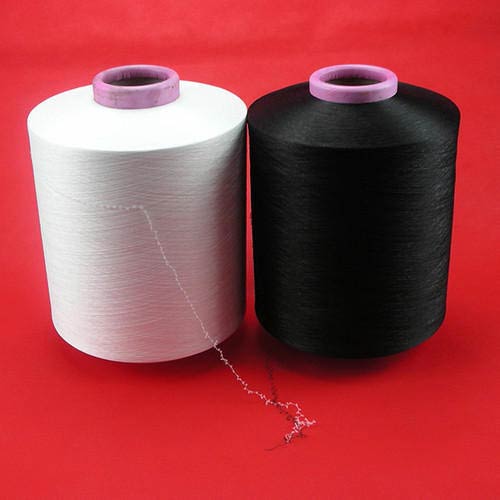
Significance of Air Pressure in Air Covered Yarns
Air-covered yarn production incorporates the usage of two different materials, one is elastic and the other is non-elastic. Of the two, the non-elastic yarns are the one that has filament such as polyester, which accounts to enrich the evenness, durability, aesthetics, and functional properties of the fabrics. While for the elastic yarn, lycra is used as a core material. Elastic core yarns usually have greater uniformity in size, strength, and elongation.

These yarns have the advantage of uniformity in length, plus the used fabrics are cover and abrasion-resistant. The higher initial modulus and stretch resistance contribute to a better loop formation, excellent abrasion resistance and durability, which are the added advantages of the air-covered yarn.
Air Covered Yarn can be divided into two categories:
- Nylon ACY
- Polyester ACY
Yarn manufacturing companies produce air covered yarn, which is further used to make different types of clothes including comfortable wear such as socks, underwear, and swimwear. Additionally, the air-covered yarns possess significant elasticity and can be designed for knitted, sewed, and woven fabrics depending on the properties.
Air Pressure effect on the yarn production
As mentioned earlier, the production of air-covered yarn leverages an elastic yarn such as lycra and a non-elastic yarn such as polyester. The polyester yarn contains filaments that aid in enriching the abrasion resistance and uniformity in length for the Air covered Yarn. On the other hand, while testing the effects of air pressure on air-covered yarn, elastic core-spun yarns are used and lycra remains the core material of inelastic yarn.
The usual parameters of the air-covering machine are as follows:
- Delivery speed- 110 meters/min
- Air pressure- 4,6,8 kg/cm2>
- Elastic draw ratio- 2
- Overfeed to jet %- 5
Given that the air pressure is the most crucial aspect of Air Covered Yarn production, there are a few characteristics that are tested for in the air covered yarn:
- Denier of air covered yarn
The denier of the air-covered yarn is nothing but the unit of measurement for the linear mass density of used fiber.
The denier of fiber is measured by preparing lea on hank meter and weighing it on weighing pan. This is done by preparing the lea by wrapping the reel for 80 revolutions of a 120 yards long and then the denier calculated.
The pressure is increased from 4kg/cm2 to 8kg/cm2 and it is obvious that the denier of the yarn increases with the increase of the pressure. On the whole, the increase in denier is a consequence of the increase in the bulkiness of the air-covered yarn.

- Loop density
The properties of the air-covered yarn are directly associated with the number of loops, thus it is very important to measure the number of loops per 1m of yarn when it’s in an ideal state.
It should be noted that the loop density increases with the increase in pressure. This is due to the fact that the height of the loop changes as the air pressure changes, which results in an increased number of loops when the length of the yarn remains the same.
- Contents of the components in the yarn
Lycra and polyester are the two components of the air-covered yarn, Hence it’s vital to separately calculate the amount of both. It is done by weighing 1m of air-covered yarn. Then, Lycra is separated from the yarn and is being weighed. Now weighing the leftover part gives the weight of the available polyester.

Also, it is usually observed that as the by increasing pressure, the lycra content decreases while the polyester content increases. Hence, it’s clear that the percentage of both the components i.e lycra and polyester changes as per the pressure variations.
Concusion
The combination of two or more yarns is used in the usual process of air covering yarn, which results in the formation of yarns having unique characteristics. Air pressure plays a vital role in the formation of these characteristics by the adjusting the air pressure between 4 to 6 and 8 kg/cm2.
By all apperances, the change in the pressure has a notable effect on the air covered yarn’s characteristics including loop density, loop stability, denier of the yarn,and the lycra and polyester content. Also, it results in a decrease in the lycra content and loop instability.





